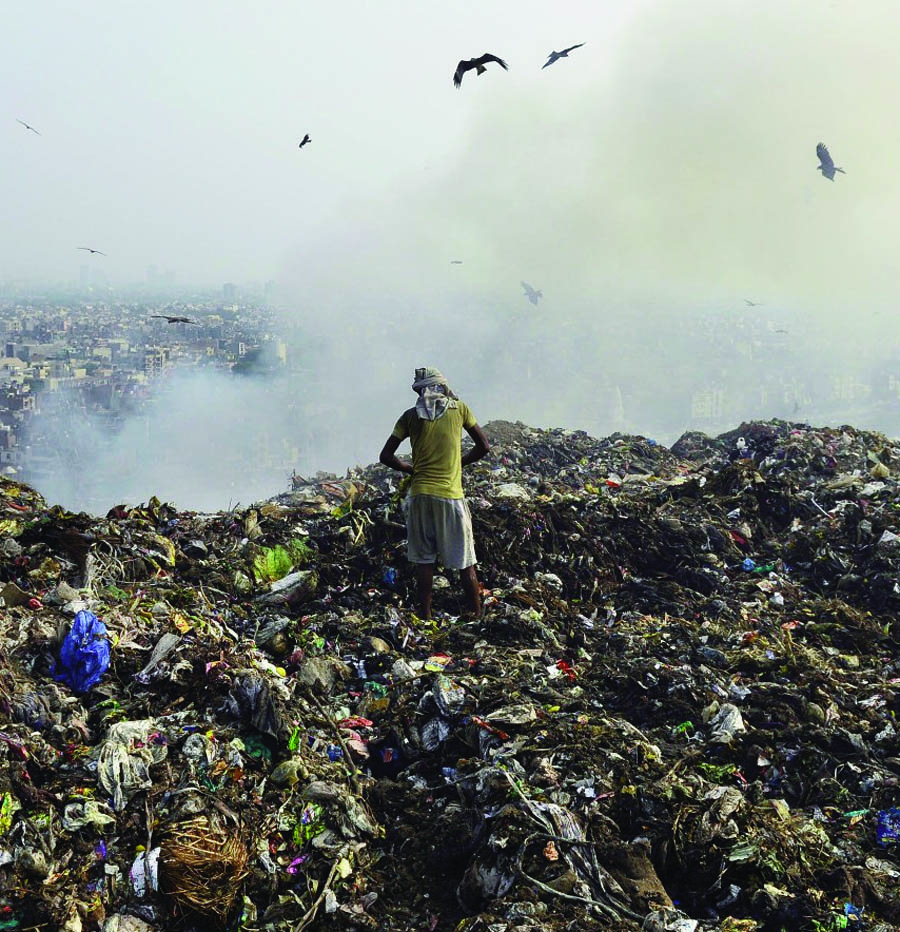
State of air
Air pollution is responsible for 12.5 per cent of all deaths in India. Its impact on children is equally worrying. Over 100,000 children below the age of five die due to bad air in the country. While India was one of the first countries to pledge the phasing out of non-electric vehicles, its national scheme to promote the sale of evehicles is yet to pick up. Against the target of 15-16 million e-vehicles by 2020, the county had 0.28 million vehicles till May 2019.
State of development
Climate change poses the biggest economic threat in the world today and features prominently in the UN Sustainable Development Goals 2030. With just 10 years to go, India is yet to identify indicators to track its climate change preparedness. Of the 13 SDGs the country is tracking, indicators exist for only a handful of the targets.
State of water
Both surface and groundwater in the country are under stress. 86 water bodies are critically polluted. The bulk of the polluted water bodies are in Karnataka, Telangana and Kerala. One of the reasons is the substantial increase (136 per cent) in the number of grossly polluting industries between 2011 and 2018. Groundwater is also reeling under overexploitation, which is running 94.5 per cent of all minor irrigation schemes in the country. There has been an unsustainable increase in the number of deep tubewells that has gone up by 80 per cent between 2006-07 and 2013-14.
State of land and agriculture
India's farm sector is under duress. While the input costs for major crops are rising, the average farmland size is shrinking. Even the share of the insured cropped area stands at a dismal 26 per cent.
State of Health
India's rural health infrastructure is ailing. There is a 35 per cent shortfall in the number of 24x7 public health centres, where 26 per cent of the positions for medical officers are lying vacant. In fact, Kerala does not have a single 24x7 public health centre. Another worrying trend is that the number of new doctors qualifying every year in the country has decreased by 60 per cent between 2013 and 2017. The country also shares the world's largest absolute burden of at least 11 major neglected tropical diseases, which includes diseases like dengue
State of cities
By 2050, India is projected to add 416 million urban dwellers to the world's urban population and will be home to about 58 per cent of the total global population. Keeping this in mind, India in 2015-16 announced its ambitious plan of creating 100 smart cities. Four years later, only 21 per cent of the allocated funds for the smart cities have been spent. In the meanwhile, most urban cities have a sizeable population living in slums, which are unfit for habitation. India has 2,613 towns with slums. Of them, 57 per cent are in Tamil Nadu, Madhya Pradesh, Uttar Pradesh, Karnataka and Maharashtra.
State of waste
The burden of solid waste is becoming unmanageable. In fact, 79 major protests against unsanitary landfills and dump yards have been recorded in 22 states in the past three years. Maharashtra, which registered 16 major protests, leaves 43 per cent of its waste unprocessed. While India claims to process 96 per cent of its biomedical waste, eight states and UTs have defaulting hospitals. The country has also recorded a 56 per cent increase in the number of hazardous-waste generating industries between 2009 and 2016-17. At the same time, most of these industries are not properly maintaining their waste inventory, as mandated by the law.
State of energy
India's natural gas and hydro-based power plants are in shambles. Gas-based plants are running at 24 per cent of their capacity due to the acute shortage of domestic natural gas. Hydropower projects, on the other hand, are running at just 19 per cent of their capacity and their share in total installed capacity has consistently declined since 1962. The country's progress in renewable energy in 2018-19 has also been dismal. In wind, the country met only 6.3 per cent of the target this year. In solar, it met 5.86 per cent.
State of climate
There has been a 22 per cent increase in India's greenhouse gas (GHG) emissions between 2010 and 2014. This has been fuelled by the energy sector, which is responsible for 73 per cent of the total GHG emissions. Besides, India phased out ozone depleting substances such as chlorofluorocarbon by 2011, it shifted to substances such as hydrochlorofluorocarbon, which have high globalwarming potential. India continues to bear the brunt of extreme weather events. In 2018, 11 states recorded major extreme weather events that claimed 1,425 lives.
State of forests
India has recently shifted to a powerful forest fire monitoring and alert system, SNPP-VIIRS, which can capture forest fires with better accuracy and precision. In April 2019, the new technology recorded 69,523 forest fires, which was 9.5 times more than that recorded by the earlier technology.
State of wildlife
37 species were poached or seized in 2018. Of these, 13, including lion, marked an increase over the last year; 161 wild animals were also killed due to road and train accidents.
State of employment
India has witnessed a 1.9 times increase in the unemployment rate in the past two years. This has especially affected the youth and the educated. Unemployment rate among people with at least a graduate degree was 13.17 per cent in September-December 2018, up from 10.39 per cent in May-August 2017.
